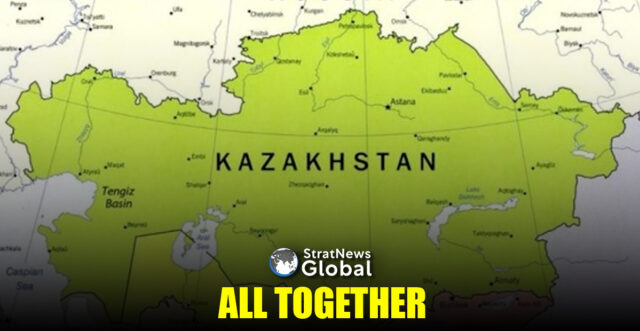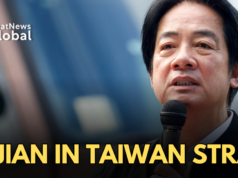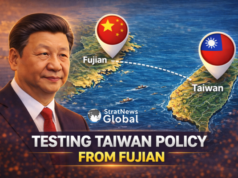The steady but deliberate knitting together of Central Asia’s five former Soviet republics into a more cohesive political, economic, and cultural bloc marks the region’s most consequential political shift in decades
The region is moving from ad-hoc cooperation toward more permanent, multi-layered institutions that connect presidents, ministers, parliaments, and civil societies, giving Central Asia a louder and more unified voice in global affairs, writes Svante E. Cornell in an August 11, 2025, analysis for the Central Asia–Caucasus Institute.
This is being driven by yearly presidential consultative meetings, growing ministerial engagement, expanding parliamentary forums, and targeted bilateral and trilateral partnerships, says the report, titled Layers of Cooperation: The Gradual Institutionalization of Central Asian Cooperation.
Early attempts in the 1990s, such as the Central Asian Union, faltered under geopolitical pressure and clashing national priorities. Now, with more mature statehood, stronger sovereignty, and a geopolitical climate that encourages unity rather than division, the process is accelerating.
Kazakhstan and Uzbekistan form the “inner core” of this effort, playing a role similar to the Franco-German axis in Europe. They are joined by trilateral groupings like Kyrgyzstan–Tajikistan–Uzbekistan in the Ferghana Valley, and Azerbaijan–Kazakhstan–Uzbekistan across the Caspian.
Cornell notes that identity underpins the shift. Religious ties, Eurasianism, or purely linguistic bonds have all failed to unite the region. Instead, a slow rediscovery of shared history, inclusive civic nationalism, and visible acts of solidarity is taking root.
Leaders like Uzbekistan’s late Islam Karimov and Kazakhstan’s Kassym-Jomart Tokayev have framed cultural luminaries and heritage as common assets, helping soften divisions despite unresolved disputes. International recognition of a Central Asian identity has grown through the C5+ formats, starting with Japan in 2004, followed by the EU, the United States, and later Russia and China. These mechanisms force great powers to engage the region collectively rather than bilaterally, subtly shifting the balance in Central Asia’s favour.
By 2023, U.S. President Joe Biden hosted all five leaders in New York; in 2025, the EU held its first top-level summit with the bloc.
Purely intra-Central Asian meetings have also been revived since 2018, producing cooperation roadmaps and industrial action plans. The 2023 creation of a Council of National Coordinators could be the embryo of a formal regional structure. The 2024 “Central Asia 2040” vision broadened cooperation to include parliaments, ministries, businesses, civil society, and think tanks.
Parliamentary forums in Kazakhstan and Uzbekistan have begun exploring legislative harmonisation and oversight for regional agreements. At the bilateral level, Kazakhstan and Uzbekistan signed a Treaty on Allied Relations in 2021, created a Supreme Interstate Council, and launched a 2024–2034 strategic program. This aims to raise trade to $10 billion while coordinating foreign policy positions in multilateral bodies—a model Cornell suggests could be scaled to the whole region.
The Ferghana Valley trilateral has turned a once-volatile hotspot into a case study in conflict resolution. Years of border demarcation work culminated in the 2025 Khujand Declaration, following agreements that eased restrictions and resolved disputes, including sensitive exclave issues. To the west, Kazakhstan, Uzbekistan, and Azerbaijan have built a trilateral partnership focused on a “green energy corridor” and integrated electricity markets.
Such projects show that Greater Central Asia’s middle powers can pool influence to shape infrastructure and trade flows, potentially reducing dependence on external powers.
But challenges remain. Security threats from great power rivalries, violent extremism, and narcotics trafficking persist, with Afghanistan still a key variable. Environmental pressures—especially over water management—are urgent despite progress on joint hydropower and energy projects.
Cornell warns that without stronger institutions, summit pledges risk stalling, particularly once the easiest agreements are implemented. Differences in enthusiasm could slow progress: Astana and Tashkent lead, Bishkek joins readily, while Ashgabat and Dushanbe prefer caution. Yet turbulence among neighbouring powers gives Central Asia a rare chance to lock in cooperation frameworks that can support security, sustainable growth, and environmental management.
Unlike many parts of the world now splintering, Central Asia is weaving together multiple layers of cooperation—and the moment to turn momentum into lasting institutions is now, Cornell concludes.
In a career spanning three decades and counting, Ramananda (Ram to his friends) has been the foreign editor of The Telegraph, Outlook Magazine and the New Indian Express. He helped set up rediff.com’s editorial operations in San Jose and New York, helmed sify.com, and was the founder editor of India.com.
His work has featured in national and international publications like the Al Jazeera Centre for Studies, Global Times and Ashahi Shimbun. But his one constant over all these years, he says, has been the attempt to understand rising India’s place in the world.
He can rustle up a mean salad, his oil-less pepper chicken is to die for, and all it takes is some beer and rhythm and blues to rock his soul.
Talk to him about foreign and strategic affairs, media, South Asia, China, and of course India.





